HOME | ABOUT US | MEDIA KIT | CONTACT US | INQUIRE
HOME | ABOUT US | MEDIA KIT | CONTACT US | INQUIRE
PUBLISHED OCTOBER 2025
Health care in the Kansas City region is characterized by a collaborative, academic environment where major health systems—whether publicly owned, for-profit or non-profit—are hubs of innovation. They are powered by legions of physicians who are drawn to and deeply committed to this area’s “family-friendly” and mission-driven cultures of their organizations. And there is a strong focus on making world-class care accessible, so patients don’t have to travel long distances.
But it all starts with personal commitment. For 29 years, our Top Doctors honorees have demonstrated a profound dedication that transcends treating illness. Their commitment is to the whole person, whether it’s restoring a patient’s ability to play the piano, guiding someone through a lifelong cancer journey, or making a patient’s end-of-life experience meaningful. This passion extends to mentoring the next generation and engaging in research to advance their fields.
Talent alone, though, can’t get us where we want to be as a region without external support for these individuals. The biggest impediments they see to delivering higher standards of care start with access itself. Especially for women’s health and prenatal services and for rural stroke patients, the barriers to better care can be policy-driven (think funding for preventive screenings), they can be geographic (extending care across a two-state area, and beyond), or they can be exacerbated by lifestyle choices of the very patients these doctors treat (obesity, smoking).
But hope springs eternal with this group. Largely driven by advances in technology and innovative procedures, virtually all of these physicians see a better world ahead, whether it’s in stroke intervention, genomic medicine for faster diagnosis, or new drug therapies that are revolutionizing care and improving outcomes.
Their collective message: Yes, health care is pretty darn good here. But it can be better if the policy-makers and the patients themselves fully engage with them in the challenges to come.
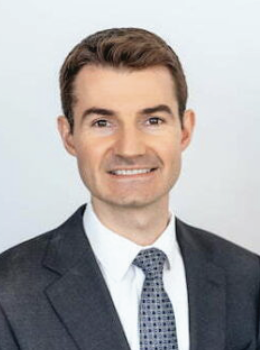 Bryan Beutel, Sano Orthopedics
Bryan Beutel, Sano Orthopedics
What’s not unusual about Bryan Beutel’s path to orthopedic surgery is the starting point: Like many in that space, he had a strong bent for engineering, going back to his childhood goal: “I wanted to become an inventor,” he says. More unusual is that medicine would pull him in, given the absence of caregivers in his family. “There was no particular defining moment” when he set his sights on becoming a doctor. It was an interest that evolved over time.” Engineering interest morphed into bioengineering, and a desire to apply those principles to serve patients, so after medical school and his fellowship back East, this native New York/Connecticut product moved into the field, married a surgeon, and tagged along when a hospital recruited her. “We visited KC and fell in love with the area and its family-friendly environment. We knew this was the place for us.” That early interest in understanding the mechanics of the human body had led him to orthopedic surgery, and his medical school rotations revealed a passion for hands-on interventions—particularly in hand surgery. “While the hand and wrist represent only a small portion of the body, myriad conditions can develop there involving every musculoskeletal tissue type, including bones, joints, tendons, ligaments, muscles, nerves and blood vessels,” Beutel says. Thus, a hand surgeon is trained to perform a wide variety of procedures, which keeps the field fresh and engaging.” Maladies of the hand aren’t often cited as public-health threats like cancer and cardiovascular disease, but Beutel will tell you that “the broad variety of pathology that can develop in the hand and wrist can lead to functional problems that affect patients’ daily lives, sometimes in profound ways that impact their livelihood, hobbies and recreational activities.” In hand surgery, he relishes the opportunity to restore that function so patients can return to doing the things they love. As a faculty member at KCU, he’s helping shape the next cohort of orthopedists. “I had always envisioned myself in an academic career. After spending years working in a non-academic hospital setting, I wanted to transition back to academia, where teaching and research are balanced with clinical care,” he says. “This trifecta of teaching, research, and patient care strikes the ideal balance for me.” The rewards? They’re often written on the faces of patients. “I had a patient suffering from Dupuytren’s disease (a connective tissue disorder that can cause severe contracture deformities of the fingers),” he says. The woman had fallen into a state of depression, unable to perform routine daily activities, including playing the piano. After operating on her hand, he could see the rapid improvement in her mood with successive follow-up visits. “Her eyes lit up when she told me that she had started playing the piano again,” he says. “The excitement I heard in her voice and the joy I saw on her face reinforced to me that I had chosen the right career path.”
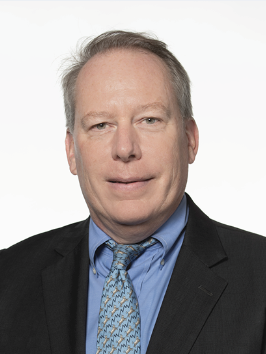 Andrew Bonham, Children’s Mercy
Andrew Bonham, Children’s Mercy
When Children’s Mercy landed Andrew Bonham to lead its transplant surgery operations, it was getting to be a proven commodity: Bonham spent 22 years perfecting his transplantation skills at Stanford Univ., where success rates for heart, lung, liver and other organ transplants all beat national averages for survival rates. The opportunity at Children’s Mercy has made him a man on a mission: “What stood out about the KC program was the vision and commitment of leadership and the alignment across the organization to build a premier pediatric transplant program,” Bonham says. A native of Shawnee, OK—he earned his undergrad and medical degrees at the Univ. of Oklahoma, then completed general surgery residency at Cornell and Texas Tech. He stayed in Pittsburgh after his transplant fellowship, then hopped to the west coast for 22 years, overseeing transplant teams while directing complex organ, liver and intestinal donor transplant programs. When that institution refocused the program’s direction, Bonham was a target of multiple recruitment pitches; KC won. Doug Rivard, EVP and physician-in-chief for Children’s Mercy, landed that catch: “This,” he said, “is what leadership looks like; the right person, at the right time, for the right reasons—and with the power to change lives.” Patients here can credit his presence to an energy-sector downturn that prompted Bonham to pursue medicine, rather than a doctorate in chemical engineering. “The problem-solving approach of engineering seemed to adapt easily to medical science, hence I switched to pre-med,” he says. “By adding a single chemistry course to my curriculum, I had enough credits to graduate after three years.” Both Pittsburgh and Stanford had robust pediatric transplant programs, with exposure to complicated and unique diseases and treatments. Stanford, in fact, was the site of the world’s first pediatric heart transplant more than 35 years ago, and since, its surgeons have performed more than 440 pediatric heart transplants. “Caring for some of the sickest children and watching them recover after transplant was incredibly rewarding,” Bonham says. “Few other fields of medicine are so challenging and yet allow such transformative care.” As for the field, he says, “it’s an exciting time to be in transplantation. Huge advances are being made. Machine perfusion allows the use of more organs over a wider distance. Advances in immunology are creating hope for immunosuppressive drug-free transplants. Xenotransplantation and bioprinting could eliminate the wait for organs.” They come together to create something vitally needed for families with the sickest of children: Hope. “Every child that goes home reaffirms my career path decision. I have patients that were transplanted as babies that have gone to their high school prom, played college baseball, gotten married and started their own families.”
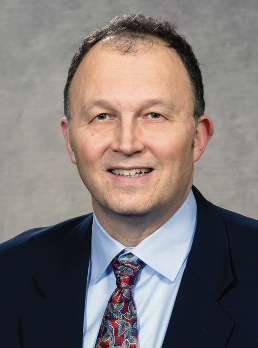 John Borsa, Saint Luke’s Health System
John Borsa, Saint Luke’s Health System
The most meaningful patient experience John Borsa can tell you about didn’t involve one of his: It was his wife, after her cancer diagnosis. “I’ve always considered myself an empathic and caring physician, but that experience changed my perspective in a profound way,” says the director of the radiology program for Saint Luke’s Health System. “Living through the uncertainty, the fear, and the hope from the other side of the table deepened my understanding of what patients and families go through. My level of empathy took a giant leap forward, and it continues to influence how I approach every interaction in medicine.” Credit Borsa in his youth for executing the honest self-appraisal that led him here. “I originally wanted to be a musician,” he says. “At some point, I realized I was probably smarter than I was talented, so I chose medicine instead. Fortunately, it turned out to be the right fit—I still get to use both sides of the brain, just in very different settings.” A native of Toronto, Canada, he came south of the border after medical school for his radiology residency at the Mayo Clinic in Minnesota. Then it was off to an interventional radiology fellowship at the University of Washington in Seattle, staying on there until a private practice in Kansas City recruited him. Ten years later, he made the leap to Saint Luke’s, where he splits time as chair of the radiology department for the University of Missouri–Kansas City School of Medicine. No family influence in medicine brought him down this path; it was more a matter of his family’s embrace of education and perseverance—his father had a doctorate in nuclear biophysics, and his mother a master’s degree in psychology. “So science and learning were always emphasized in our home,” Borsa says. “My father often pointed me toward medicine—I think it was something he wished he had done himself—and his encouragement definitely helped steer me in that direction.” He settled on radiology because it combines analytical reasoning with technology and collaboration across every specialty. “You have a hand in virtually every patient’s care, and the field continues to evolve rapidly with new imaging techniques and interventional procedures,” he says. “It’s dynamic, intellectually challenging, and rewarding. Interventional radiology, in particular, adds the opportunity to directly treat patients using minimally invasive, image-guided techniques—bringing the best of both diagnostic insight and hands-on care together.” Radiology is a tool with a wide range of applications, and he says that “the diversity is one of the great privileges of this work. Every day we encounter a spectrum of diseases—from trauma to cancer to vascular disorders—and each case requires a unique approach. Seeing the direct impact imaging and image-guided procedures have on diagnosis and treatment never gets old.”
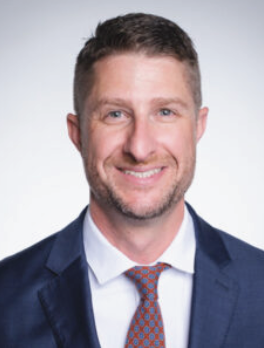 Jared Elliott, Stormont Vail Health
Jared Elliott, Stormont Vail Health
It’s a cliché for many a health-care provider, says Jared Elliott, but the call to serve—to help people in need—was a powerful incentive for him to pursue a career in medicine. He does that today as a hospitalist for Stormont Vail, the largest provider in Topeka and much of northeast Kansas. A Kansas native who followed his father’s high school coaching career to various locations, most of them in his home state, he knew as early as high school that medicine would be his path. But which field? A family friend was a chiropractor, and Elliott decided to attend chiropractic school in the Kansas City area. “Halfway through, I realized I wanted to do more actual medicine.” After the med-school entrance exam, earning his D.O. at KCU and completing his residency in internal medicine at The University of Kansas Hospital, he says, “The rest is kind of history.” Within that niche, he says, “I like the cerebral aspect, the problem solving, thinking through complex things. The biggest draw is that it’s such a broad field, with so many different types of pathology and the opportunity to interact with people with different conditions. It’s always fresh and exciting.” And it plays to a personality that’s comfortable getting to know people and establishing real connections. “I feel like a true advocate, caring for them as a person,” Elliott says. “Internal medicine is uniquely geared for that, obviously, in taking care of their conditions, that’s the job, but the primary goal is to take care of the person. Some specialties don’t have that benefit of that focus.” If you’re a fan of those TV dramas that populate every channel with gripping tales of doctors overcoming incredible odds—in less than 60 minutes—Elliott would encourage you to temper your views of what life in a hospital is like. “Watching those, most of the time, they make you frustrated, like ‘House,’ where they come up with a rare diagnosis in half an hour. I just wish it were like that.” That doesn’t mean the small-screen excitement is unknown in real life, where cases of catastrophic illness or cardiac arrest can suddenly break the routine. And in those moments, taking care of the truly sick, Elliott finds reward. “Beyond the emotional connection and the purely academic side of the coin, I really enjoy talking to people who are not doing well and getting them better,” he says. “It’s incredibly satisfying, and it only happens that way in a hospital. It’s hard to describe how it makes you feel to take someone who may not make it, treat them, and see them walk out of the hospital. Not many people get to experience that in their day-to-day life.”
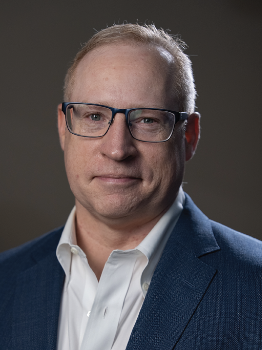 Mark Hamblin, The University of Kansas Health System
Mark Hamblin, The University of Kansas Health System
Dad’s push to help him discern a path, Mom’s intricately illustrated nursing texts and a small army of highly skilled mentors have made Mark Hamblin the physician he is. But he brought something else to the mix from the get-go: “I knew from a young age that I did not want a job,” he says. “I wanted what I do to be inseparable from who I was. I wanted to be able to go anywhere in the world and still be that thing, whatever it was meant to be.” That drive would see him navigate the complexities of the human lung as an interstitial lung disease specialist, tackling a dizzying array of maladies that attack the interstitium, which gives structure to the lungs and supports the air sacs that bring oxygen to the blood. When it starts becoming diseased—and there are more than 200 things that can cause it to become diseased, he notes—it starts to thicken, leading to swelling of the lung tissue, progressive fibrosis or scarring of the lungs. “Regardless of the initial pathway, the end result is typically pulmonary fibrosis, which can progress to end-stage lung disease,” Hamblin says. His expertise in the field, honed by clinical training at Johns Hopkins and Tulane University, as well as by hands-on challenges of caring for patients in the chaos that followed Hurricane Katrina in 2005, eventually led him back home. Hamblin, who grew up in Independence and earned his medical degree at Mizzou, joined the health system here in 2011. A year later, he was tasked with starting a clinical research program and oversaw the system’s first clinical trial on Idiopathic Pulmonary Fibrosis. Out of it emerged pirfenidone, a drug that would become one of the first treatments for IPF—not a miracle cure, he says, but a treatment that would slow progression of the disease by half. In the first month after the FDA approved its use, not one of the hospital’s patients died of the condition. “That was the first time that had happened since I started,” Hamblin says. “We would usually have three to five patients die every month from this disease.” More than 50 clinical trials later, and with a third therapy approved just this month, Hamblin continues to make a profound difference in the lives of patients and a future cadre of providers. “Knowing how many patients I have lost over the years, and the terrible impact of this disease on their loved ones,” it is incredibly rewarding to see what we’re beginning to achieve in this field,” he says. Time was, he says, when few who were in their pulmonary fellowships would choose a career in interstitial lung disease, given its challenges and high probability of poor outcomes. “But now, with these advances,” he says, “we are seeing more and more of our young fellows becoming passionate about this area of medicine.”
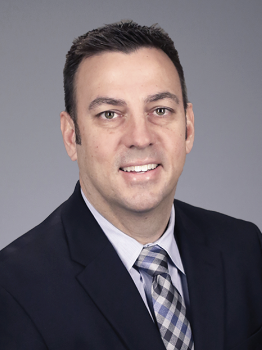 Douglas Ham, NKC Health
Douglas Ham, NKC Health
For most people, the concept of “home” does not involve treating heart attacks, strokes or victims of car accidents and gunplay. But, says NKC Health’s Douglas Ham, “working in an Emergency Department has always felt like home for me. I like the varied illnesses and injuries that we treat. The ED is a real team sport mentality where we rely on each other, and I love being part of that team.” Within that wide range of medical emergencies, he has learned much from the contrasts in his work. “The human body is very resilient in many cases but also so fragile in others,” he says, “very capable of healing itself in many cases from pneumonia to other infections or from injuries, but sometimes it needs a helping hand.” That, he says, is where health care comes in: “I think all the time how lucky we all are to live in this age of history where we have amazing medicine. Of course we can’t cure everything, but we have better treatments now than at any point in time. With the right treatments and care we are able to extend people’s lives and their health.” And he has a lot of opportunity to do that: American Hospital Association data show more than 52,000 annual emergency-room visits at NKCH. “There is a huge array of diseases and injuries that we treat,” he acknowledges. “We really do need to know how to handle any emergency that can walk in the door. I think the biggest challenge for me personally is to keep up with how fast changes in medicine occur. The amount of new medicines and procedures that come to the market each year is staggering and all of them have their own complications that we must be aware of.” The time frames for delivering emergency care are also evolving. “The biggest and best trends that I have seen in my 25 years of medicine is in timeliness of our care,” Ham says. “We have many Time Critical Diagnoses that we diagnose and treat rapidly such as strokes, traumas and heart attacks. That is where the Emergency Department really helps in the care of the severely sick or injured patient.” The hospital itself isn’t far from his stomping grounds as a St. Joseph native, and he came back home after med school and a five-year stint in Springfield. While in college, he says, “I worked as a tech in the local emergency department and that is what ultimately solidified my choice on medicine.” The people around him—nurses, physicians, mentors—confirmed that choice, as did his parents and his wife, an optometrist. “It all just seemed to naturally fit into my life,” he says, “and I am so grateful for the opportunity to work as an Emergency Department physician.”
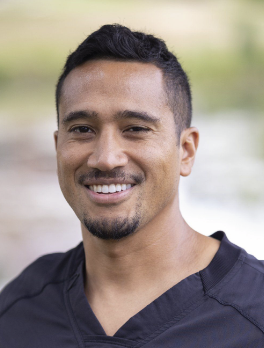 Thomas Hocker, Advanced Dermatologic Surgery/University Health
Thomas Hocker, Advanced Dermatologic Surgery/University Health
For Thomas Hocker, medical-school rotations had a kid-in-a-candy-store aspect: “I loved every subject,” he says. “They were amazing, and intellectually, I found them all super-stimulating.” What really resonated, though, was dermatology. “The nice thing about dermatology,” he starts, then self-corrects, “well, it’s really twofold: One, you are able to do a little bit of everything I appreciate in medicine—there’s a cognitive aspect where you look at the skin and use your acumen to come up with the right diagnosis.” There’s also a surgical component, he says, that allows him to be hands-on with patients, doing biopsies or skin-cancer excisions. Apart from treating patients directly, there’s also the pathology piece, he says, looking under the microscope and doing lab studies. A California native raised by a NASA engineer (his father) and a teacher of deaf students (his mother), he had passions for science and service bred into him. He brought impeccable credentials when he came to Kansas City: He was recognized as the top biology student at Yale, earned a scholarship to Cambridge University’s Churchill College for his master’s in organic chemistry, received his medical degree from Harvard, and was recruited to the Mayo Clinic, among other stops. At every step, he says, “I realized that I just loved dealing with patients, and the more human aspect of things. My passion wasn’t sitting over a flask or distilling things in a fume hood. I like knowing how the world works, and more directly making lives better, as opposed to working on a project that might yield a treatment 25 years down the road.” He ended up specializing in Mohs surgery and reconstructive plastic surgery, and he’s one of only about 30 worldwide—and the first Black physician in the U.S.—to earn triple board certification in dermatology, dermatopathology, and Mohs surgery. That gives him entrée to a wide variety of cases. To date, he has performed more than 2,400 melanoma Mohs surgeries—placing him among the top three worldwide by volume. “What I like to bring to my patients, and my goal from the beginning, is to bring the best of the medical world to patients in the Midwest,” he says. “I take everything I learned from Harvard, the Mayo Clinic, and later, the University of Michigan, and bring it to an area that historically hasn’t had quite as many world-leading experts as other parts of the country.” To that end, he founded University Health’s Dermatologic Surgery Division and established one of the nation’s first Mohs melanoma specialty clinics. Hocker loves teaching residents and authored Review of Dermatology, Amazon’s best-selling dermatology textbook, donating 100 percent of proceeds to the Skin Cancer Foundation. “Above all, medicine is about serving others with kindness and competence,” he says. “It means a lot to me if I’m able to help people receive world-class care without traveling 500 or more miles for it.”
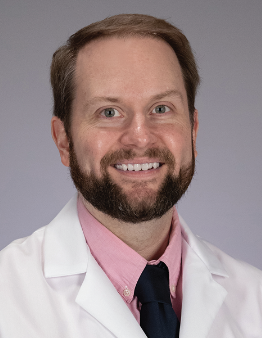 Andrew Jurgensmeier, NKC Health
Andrew Jurgensmeier, NKC Health
He was pretty sure the career track would be neurosurgery. Then reality came knocking for Andrew Jurgensmeier. “I literally never stepped foot in an operating room until my second year of medical school. Basically, as soon as I went into the operating room, I recognized that this was not the place for me. Everything was sterile, everything was very formal, and every single action was life-or-death. None of that suited me at all.” It didn’t take long to see that his path as a physician had narrowed. But to what end? “I really found myself loving my rotations that were focused on prolonged patient interactions,” he says. “I loved delivering babies and taking care of kids, but also being able to sit with patients and process their conditions and lives. Family medicine seemed like an obvious fit for me, and it still seems like the perfect role.” An Army brat who lived in eight states before landing at K-State as an undergrad, Jurgensmeier practices for NKC Health. After interviewing at a couple of places before settling there, he says, “Gashland Clinic just seemed like the perfect fit at the time, and it is extremely hard to imagine practicing anywhere else or being happy anywhere else. We are now Kansas Citians for life, and have four children ranging from ages 13 down to five.” That nomadic upbringing, he says, pays dividends today. “If there is one thing that moving every two to three years teaches you, it is how to adapt,” he says. “Definitely in clinic, every day is different, and I could literally go from one room where I am diagnosing strep throat to the next room discussing hospice with my patient who has end-stage renal disease. Being able to shift gears rapidly and adapt to different patient needs and circumstances feels very fundamental to my childhood and life.” Across his 13 years in practice, two significant shifts in care have come in the past five. “First, when I began my practice, I started literally the day after a storied family physician retired, and immediately my practice and panel were full,” he says. As many of those patients themselves transition into retirement, their needs are evolving. “The second thing that has been very obvious over the last five years is the different ways the Covid pandemic has changed us. It’s changed us both physically in terms of our health with the impact that the virus had and continues to have, but also emotionally and socially, things have just shifted so much. I, along with other physicians, have had to find ways to navigate those changes and continue to help people live their best lives and feel well.” There’s still plenty of career runway ahead, but already, some vivid memories are taking hold. “The memories of patients that stick most clearly in my mind are my patients that I have helped transition into hospice at the end of their lives,” Jurgensmeier says. “It is a profound experience to sit and talk with someone who is staring at the last bit of their life and be able to focus on making their last days on Earth as comfortable as possible.”
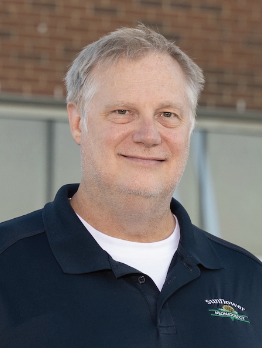 Thomas Lancaster, Sunflower Neonatology Associates
Thomas Lancaster, Sunflower Neonatology Associates
Thomas Lancaster is pretty candid about it: His first brush with high school didn’t exactly bowl anyone over academically, and his first exposure to neonatal intensive care during med-school rotations was so hard, he says, that his wife thought he might quit. But here’s what you need to know about Lancaster: He’s no quitter. In his sophomore year of high school, he kicked his studies into high gear. And he gutted out NICU, working with a physician he considers his first true mentor one who had a challenge for the young doctor. “He inspired me to do what I do now,” Lancaster says. “And I’m glad he did, because I love it. He pulled me aside and said, ‘Lancaster, you have good hands; you could save babies for a living. Have you ever thought about a fellowship?’ I reflected on that, I loved critical care, primary care of newborns, not just heart or kidney, but taking care of the whole patient.” There was another aspect to it as well: “There would be ethical challenges and a feeling like I could bring my sense of morality and ethics to help patients,” he says. Within that sphere, there is no shortage of challenge. “I do have an academic interest in the development of the brain and brain injury in neonates, but that’s not what I spend most of my day doing. I can be challenged with sick lungs, with a child who has seizures, one with an infection, or one who’s simply premature and not ready for the real world. I like that approach.” Changes in care delivery are constant as technology and processes advance, but there’s more to pediatric medicine than little patients. “As far as the kinds of problems that enter my space, that affect the fetus and newborns, I think there’s still an ongoing problem where access to care for women is a major problem, especially in certain demographics where access is more difficult than ever,” he says. “That has a direct impact on the health of both the mother and fetus. I worry that the problem is getting worse, not better.” Public health policy, he says, at times feels penny-wise and pound-foolish with allocation of funds, whether federal or state. “It’s much cheaper to provide prenatal access, care, diagnosis and management than to put barriers in place.” More optimistically, he believes that advances in genetic screening and diagnostic genetics are rapidly improving. “We can come to better, more specific diagnoses today than even five years ago,” Lancaster says. “With genomic medicine, we can arrive at a diagnosis sometimes in a matter of days vs. years. I predict that in the next five or 10 years, that will mean even faster, better and cheaper care that will allow for targeted diagnosis and treatment.”
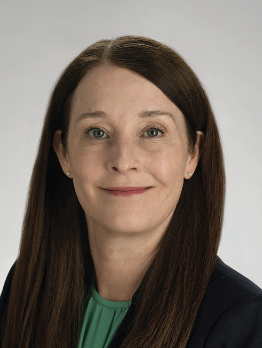 Colleen Lechtenberg, The University of Kansas Health System
Colleen Lechtenberg, The University of Kansas Health System
Her first foray into patient care came in a psychiatric hospital, after earning her psychology degree from the University of Kansas. For Colleen Lechtenberg, that aspect of the mind—the way it guides human behavior—triggered a curiosity to know more about what happens upstream, physically, inside the brain itself. Knowing that she’d have to get into medical school to take her career in that direction, she started at the University of Utah and came home to finish at her alma mater, charting her course to become a vascular neurologist. The career considerations, though, were just part of the motivation. “My parents, my aunts, had shown me what it means to take care of people and help the sick and less fortunate,” Lechtenberg recalls. “That translated into the more fulfilling things in life: taking care of the vulnerable. That foundation was laid in my childhood and definitely influenced my decision to become a doctor. Through med school, the intrigue of neurology pulled hard. “I was interested in psychology and psychiatry, but things shifted in the neuroscience block in medical school,” she says. Her early interest in psychiatry yielded to the mysteries of neuro anatomy and physiology, and an adviser in the field urged her to consider neurology. “The field was evolving for inpatient neurology, and during my training, the concept of a neurohospitalist—a neurologist based in the hospital rather than in clinic—was new.” A large part of her work today focuses on vascular neurology and stroke—the causes and treatments. The stroke field, she says, “has really been revolutionized in the past decade or more.” It’s intense work that has a deadline in the most appropriate use of the word—every minute of delay in treating a person having a stroke can spell death for 2 million brain cells. “Part of what we do is emergency treatment, try to stop or lessen the impact before damage becomes permanent,” Lechtenberg says. “We’ve seen tremendous advances in catheter-based therapies since the pivotal trials in 2015 showing they were safe and effective in select people. We have also seen increased use in thrombolytics or clot-busting medications to stop stroke.” These advances, she says, can lessen or even reverse symptoms in patients—a critical factor in a state that covers 82,000 square miles, with patients from rural areas often far from a stroke center. “Statewide, we try to make sure no matter where you live that you have access to those treatments,” she says. … The faster we can get them that care, the better their chances.” Improvements in the stroke chain of survival, she says, have come across the spectrum: increased awareness in the general public to recognize a stroke as it happens, understand ways to prevent it and know the risk factors; better instruction for emergency responders, and greater organizational focus at the hospital and provider level. As a result, she says, “we’ve seen more acute interventions and a decrease in mortality rates from stroke in Kansas.”
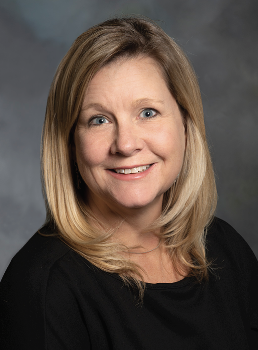 Karin Olds, Saint Luke’s Health System
Karin Olds, Saint Luke’s Health System
She calls herself a Midwestern girl, but a better tag might be “Saint Luke’s girl.” Karin Olds was born at Saint Luke’s Hospital, worked there as a nurse, then came back to those roots after medical school to focus on stroke patients with her work as a neurologist, and now serves as stroke medical director for the system. In that role, she extends her reach to far more patients than she could treat individually, but derives from that the same satisfaction she knew in a hands-on role. Just this month, for example, a woman was transferred in from an outside hospital, unresponsive after a clot formed above her brain stem. “The neurosurgeon was able to get the clot out, and she’ll walk out of the hospital this week,” Olds beams. “That’s what acute reversal therapy is; that is my destination, my dream. I want to be a part of this and don’t need to do the procedure myself. My directorship allows me to do that.” And she still gets to address patients directly through regular visits to the system’s Anderson County clinic in Kansas. “But acute reversal, taking something that has suddenly happened that can be incredibly devastating to people, and giving them their life back is what it’s all about for me.” Olds came to the field from an unusual pathway—her mother secured a nursing degree at age 50, and the two were even lab-mates at one point during nursing school. Olds started at Saint Luke’s after leaving Mizzou, and in 1993, the road forked with the hospital’s introduction of a neurology unit. There, under the leadership of multiple mentors, she developed her passion for delivering stroke treatment during a time of profound advances in the field. That inspired her to return to school at KU’s School of Medicine and eventually to Saint Luke’s as a doctor. Did those twin tracks pay off today in her worldview of care? “Absolutely,” she says. “I think it gives me an edge to be able to relate to patients and their treatment teams. It takes a multidisciplinary team to take care of patients—other physicians, nurses, occupational and physical therapists, and the people who bring meals and clean the rooms. So I do think a nursing background makes it easier for me to relate to the whole team.” And the team, she says, continues to leverage advances in technology and procedures to improve outcomes. “And really, it’s still evolving,” Olds says. “We can do a lot better job setting up protocols with outlying hospitals now, and neuroscience outreach educators who understand that time is essential for the brain. We have to get patients to treatment as quickly as possible, and watching how far we’ve come is amazing to me. And I love that I have the background at this institution as a nurse in the 1990s, having seen where it all started.”
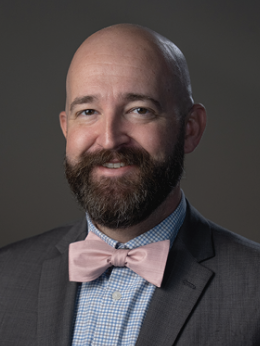 William Parker, The University of Kansas Health System
William Parker, The University of Kansas Health System
What makes health care in Kansas City stand out? For William Parker, it’s not just the talent in the physician, nursing and support ranks—it’s the city itself. He’s a prime example of how this region gets its hooks into newcomers and refuses to let go. “I tell most people, truthfully, this city is a hard place not to fall in love with.” Coming here in 2017, he says, was “a no-brainer. This is a great institution, and we knew we’d have the opportunity to do what we wanted to do.” He had to get over first impressions of Rainbow Boulevard—dramatically redeveloped since then—“and at first, I thought: no chance.” But the people, the relationships, the amenities like pro sports and arts, added to the work piece. As for the work, he’s a urologist specializing in cancer treatment, but getting there wasn’t a straight-line journey. “My arc is a little bit unique—as an undergrad, I worked for a biotech company that did research involving surgical procedures on chickens.” That was enough to ignite his interest in treating people, but not as a surgeon. “What disheartened me about it as a field,” he says, “is that you operated on someone and never saw them again. Fix a hernia, then you’re done. I didn’t like that.” With urology, Parker says, “When you treat somebody, you never stop taking care of them. We continue to be the ones who help people with those issues, often for years.” Even within his niche, he has a particular focus, treating only those patients with prostate cancer. “One aspect of the rewarding nature speaks to the KU Health philosophy: I’m not a jack-of-all-trades and master of none. I’m really good at one thing, and I like that aspect of medicine.” Prostate cancer, he says, affects men in a uniquely intimate way, so “being able to engage with them on what is a terrible thing to begin with, and guide them through treatment, after-care and good outcomes is a lifelong journey.” Those good outcomes, he says, are increasingly part of his work thanks to the tech advances and their application in all adjuncts. The flip side of trends in that malady is the declining rates of PSA testing that can identify early threats. The reasons for that trend are tough to nail down, but what’s alarming about it, he says, “is that rates of testing for colorectal cancer are stable, while prostate cancer tests are declining. That’s a bit of a concern.” Through his work, he fulfills a commitment he’d made to the profession long before medical school. “From an early age, I had the idea that I wanted to be a doctor,” he says. “Growing up, I had an encyclopedia in my room with this set of clear plastic overlays that had the human body in layers. It was the most fascinating thing I’d ever seen, and I never stopped thinking that this was my path.”
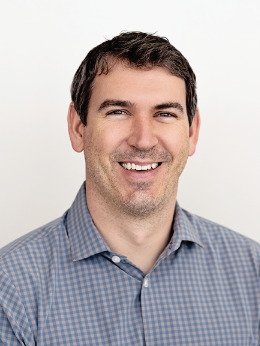 Timothy Roberts, Sano Orthopedics
Timothy Roberts, Sano Orthopedics
Millions of people in the U.S. regain at least part of a life crimped by orthopedic maladies, thanks to surgeons like Sano’s Tim Roberts. He’ll be the first to tell you, though, that the satisfaction belongs not only to the healed: “It’s incredibly rewarding to help people regain their mobility—especially when it comes to knees and hips,” he says. “Once patients are able to move without pain, they can return to the activities they love, whether that’s exercising, working, or simply spending time with family. Seeing someone go from struggling to walk to thriving again is a powerful reminder of why I do this work.” If you want to know what makes a good doctor a great one, there might be no better discernment of a physician’s compassion and competency than what comes from his peers. Take it from a nurse—no, not a relative—at Lee’s Summit Medical Center: “Dr. Roberts is the most compassionate doctor that everyone loves,” she says. “His patients feel extremely confident in his care, the hospital staff have a strong partnership with him and he is truly an outstanding surgeon and colleague.” A native of St. Louis, he graduated from Mizzou, then headed west to Touro University Nevada College of Osteopathic Medicine. He came here for his residency in orthopedic surgery through Kansas City University of Medicine and Biosciences and St. Mary’s Medical Center and—stop us if you’ve heard this before—was hooked. “I really fell in love with the city. That experience opened the door to a great opportunity to start my career here,” he says. “My wife is also in health care, and together we’ve built a life here with our two daughters. Kansas City has become home.” Orthopedics called out to him, he says, with his first rotation in general surgery. “I quickly realized I loved being in the OR. The following month, I rotated with orthopedics and everything clicked—the cases were fascinating, and I appreciated the blend of clinic and surgery. I enjoyed building long-term relationships with patients and seeing the direct impact of treatment on their quality of life.” His field is abuzz with increases in joint-revision surgeries, especially as Boomers retire and stay active longer, he notes. “Fortunately, advancements in implant technology have significantly improved outcomes—today’s materials are far superior to those used 20 years ago. Patients with arthritic joints no longer have to wait until things get worse; they can pursue surgery earlier and enjoy a better quality of life sooner. It’s exciting to see how far the field has come.” One particular patient success continues to resonate with him, involving a woman with post-surgical complications from a joint replacement. “Her recovery was anything but straightforward. But she stayed committed to the process, and we worked through each challenge together. She continued to thank me for sticking with her, that it changed her life.”
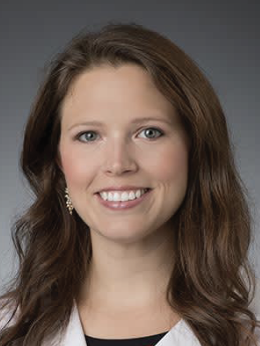 Blair Smith, University Health
Blair Smith, University Health
The neonatal wards generally brim with radiant smiles and celebrations, but those can be harder to come by for Blair Smith. To be sure, there are happy outcomes when treatment of gynecological cancer produces a remission or cure. The scale doesn’t always tip that way: Nationwide, success rates for Stage I and II run north of 60 percent to as high as 95 percent. But at stages III and IV, the prospects dim. Nonetheless, Smith finds a calling even in those cases. “I always wanted to be a surgeon, but what I found on my med-school rotations was that I was very honored to take care of people at the end of their life,” she says. “When I went through my rotations, I was thinking to myself how much I’d been an advocate for women’s health, but I was especially drawn by this ability to care for a woman who comes into the clinic with cancer, from surgery and the chemo side, and this is one of the few fields that does both. I can really say, from the beginning, that I am here with you until the end. A lot of physicians struggle with that, and it’s a very hard conversation to have with someone. But I’m honored and feel fulfilled when I can make the end of life more meaningful for someone.” She’s a native of Independence who left the region for 17 years for college, post-graduate training and the first leg of her career before coming home. That path started with a goal of pursuing biomedical engineering, overlaid with a youth-volunteer history at Children’s Mercy and Blue Springs Medical Center. “I knew I wanted to help people,” Smith says, “and I believed for me that would be through research to improve health care.” She did a stint at a Boston lab before deciding to make the work more personal by going to medical school. Recent years have complicated her task—or at least the nature of her cases—from delays in care that started during the 2020 pandemic. “We’re still seeing patients with delayed care,” Smith says. “In general, more of them are showing up with more advanced cancer. And some of it is happening in younger and younger patients.” Why? Some of it is a mystery, some can be traced to lifestyle factors like obesity, she says, and much remains to be determined. “We’re having more conversations about fertility and the loss of fit, especially in some younger patients, and that’s very emotional,” she says. “And some going into menopause at younger ages—also very challenging. Then there’s the struggle to have insurance and access to care, the thing they ultimately need.” As for the wins? “I tell people when we first meet, we’re in this together, welcome to my family,” Smith says. “So when we have a patient you can say is in remission, when we can keep them there, honestly, the next question I have for them is: What do you have planned? I want you to live your life. If treating you isn’t so you can live that life, then I’m not doing my job.”
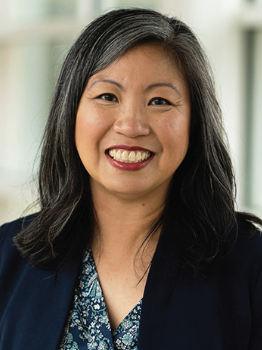 Anh Vinh, Camber Mental Health
Anh Vinh, Camber Mental Health
Her stories are as harrowing as they are heartbreaking: tales of children from abusive backgrounds, whose short lives have been plagued with neglect, drug and alcohol use—even attempted suicide. Their cases were a challenge before the pandemic; the devastation wrought by that global upheaval still shows up today in Anh Vinh’s office at Camber Mental Health, a subsidiary of KVC Health Systems. “The isolation, the fallout from it was part of a mental-health decline in children and adults alike,” Vinh says. Over the past five years, “We saw more silent attempts, as opposed to pre-covid, and even gunshot wounds in the pediatric population. More suicides, in a much more desperate time.” The lasting effect of that, Vinh says, vividly illustrates the way social media has gone from a platform for connections to a form of electronic isolation, one that she says “continues to harm our kids today.” She’s been with the KVC system for a decade, recruited away from The University of Kansas Hospital by now-CEO Jason Hooper, to whom she had turned to for advice on a particularly challenging case involving an abusive family dynamic. Hooper made an impression, telling her to bring her young patient with her and “We’ll figure it out.” She did, leading to a life-changing experience for both patient and physician. “They treated him like he was their only patient,” she marvels 10 years later. It’s a story of perseverance and commitment grounded in Vinh’s own background. Her parents fled Vietnam in a boat just months after she was born in 1975, were rescued by a Navy ship and eventually settled in America. Salina, Kansas, to be precise. The cultural clash was profound for Mom and Dad, who ended up working at a food-manufacturing plant, but who pressed young Anh and her five siblings to excel in school. Her father also dissuaded her, in no uncertain terms, that her plans to be a social worker were a non-starter: She’d have to study biology, like her sisters. She did, but unsure of how to use that credential, she opted for nursing assistant—“This isn’t it,” she remembers telling herself. She also worked as a researcher at the VA Medical Center in Kansas City. Again, not the right fit. That led to an application to KU’s medical school, and she was on her way, training in psychiatry and staying on as site director for the residency program. Camber treated more than 3,600 patients last year, and she says “we take the hardest cases. A lot of times, with the behaviors we focus on, when we’re able to dive in, it’s just heartbreaking, all the trauma these kids have been through. So many people don’t see the damage or the hurt, or the relearning of how to live that the staff has helped them with.” The successes, as they come though, are the reward.
Reagan Wittek, AdventHealth
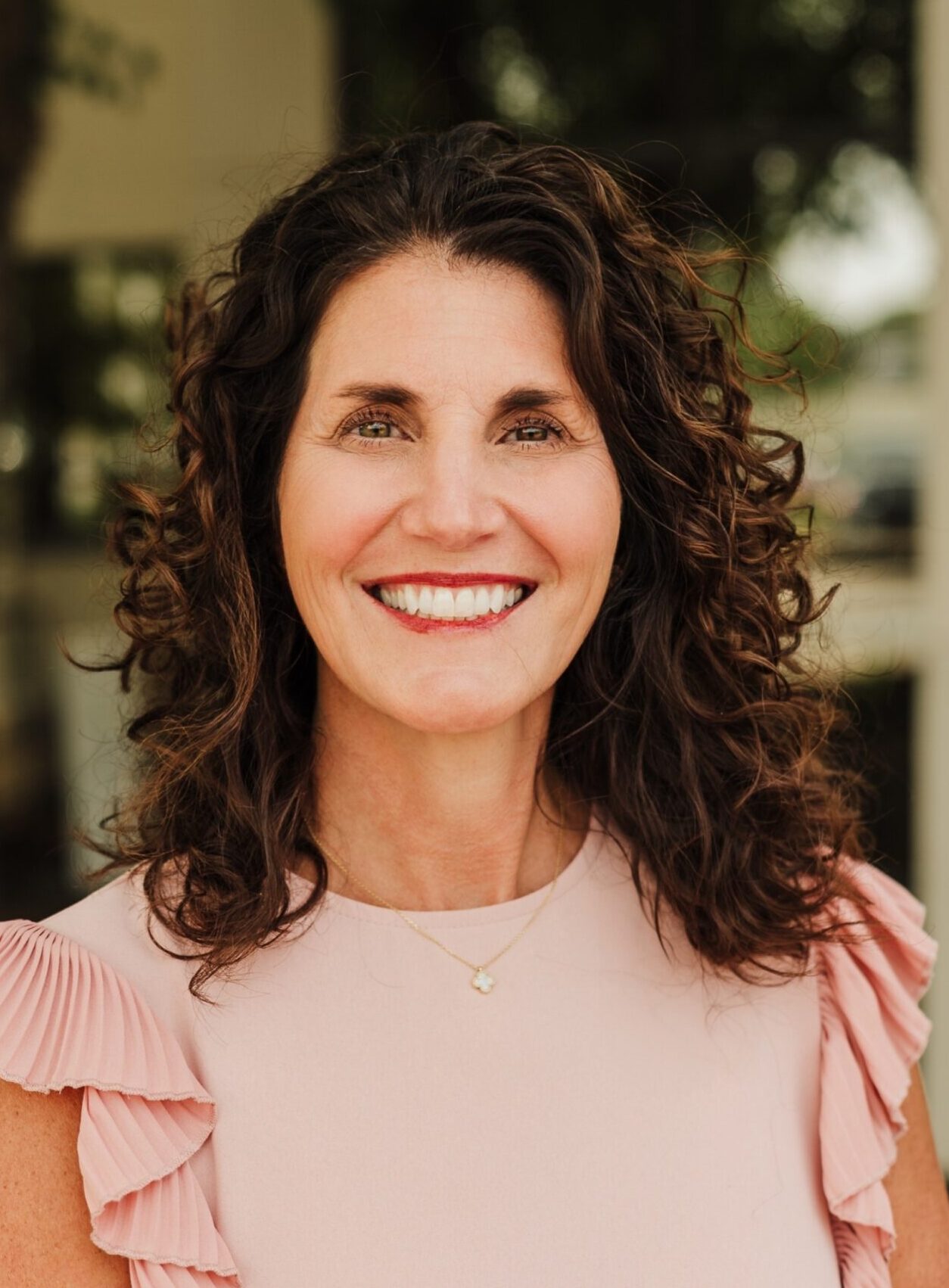 Reagan Wittek’s journey to medicine isn’t just a tale of personal achievement: It’s a love story. In the realm of superior health care, she truly delivers—both literally, in her role as an all-star obstetrician at AdventHealth’s Shawnee Mission Medical Center, and figuratively, in her unwavering dedication to the well-being of every patient she serves. “I love the surgical and technical aspect of the field, but most of all, I love the relationships I form with my patients,” she declares. “I get to take care of them on a routine basis for a 40-week time period and then be part of the most amazing moments of their lives. I love it so much.” Long before med school at Creighton University, and her ob/gyn residency at UMKC, this native of Lubbock, Texas, set her course early. “I decided in middle school that I was going to be a doctor, and shortly after knew I wanted to choose a field where I could use my hands surgically and form lifelong relationships with patients,” she says. “Ob/gyn was perfect!” That extraordinary dedication is powerfully highlighted by the numbers: Wittek delivers more babies at the Johnson County hospital than any other OB physician with privileges there, a testament to the trust and confidence she inspires. But the evidence of her excellence isn’t merely anecdotal; it is documented in a trophy-case-bursting with honors from various health-sector publications and media features. Her accolades include in-house hospital recognition for her specialized expertise in minimally invasive gynecologic surgery, including robotic-assisted procedures. Her recognition reflects a patient-centered philosophy of offering advanced surgical options that significantly reduce pain and recovery time, getting mothers back to their families faster. She has repeatedly earned a place on the Healthgrades Honor Roll, a distinction grounded in objective clinical-outcomes data. Within her sphere, much has changed in recent years, and many of those influences have been external factors for women. “So much of women’s health is influenced by the immune system,” Wittek says, “and with all that has happened in the past five years, our immune systems are under more stress and therefor women’s health has become more complicated.” Every aspect of that work brings its own rewards but the biggest, she says, “is the fact that I get to do something day in and day out that I love. I love taking care of women. I feel honored to be part of my patients’ lives. I am so thankful that i get the opportunity to take care of women and form a connection with them.” And with that daily affirmation, she says, “as cheesy as this sounds, every delivery makes me feel this way.
Reagan Wittek’s journey to medicine isn’t just a tale of personal achievement: It’s a love story. In the realm of superior health care, she truly delivers—both literally, in her role as an all-star obstetrician at AdventHealth’s Shawnee Mission Medical Center, and figuratively, in her unwavering dedication to the well-being of every patient she serves. “I love the surgical and technical aspect of the field, but most of all, I love the relationships I form with my patients,” she declares. “I get to take care of them on a routine basis for a 40-week time period and then be part of the most amazing moments of their lives. I love it so much.” Long before med school at Creighton University, and her ob/gyn residency at UMKC, this native of Lubbock, Texas, set her course early. “I decided in middle school that I was going to be a doctor, and shortly after knew I wanted to choose a field where I could use my hands surgically and form lifelong relationships with patients,” she says. “Ob/gyn was perfect!” That extraordinary dedication is powerfully highlighted by the numbers: Wittek delivers more babies at the Johnson County hospital than any other OB physician with privileges there, a testament to the trust and confidence she inspires. But the evidence of her excellence isn’t merely anecdotal; it is documented in a trophy-case-bursting with honors from various health-sector publications and media features. Her accolades include in-house hospital recognition for her specialized expertise in minimally invasive gynecologic surgery, including robotic-assisted procedures. Her recognition reflects a patient-centered philosophy of offering advanced surgical options that significantly reduce pain and recovery time, getting mothers back to their families faster. She has repeatedly earned a place on the Healthgrades Honor Roll, a distinction grounded in objective clinical-outcomes data. Within her sphere, much has changed in recent years, and many of those influences have been external factors for women. “So much of women’s health is influenced by the immune system,” Wittek says, “and with all that has happened in the past five years, our immune systems are under more stress and therefor women’s health has become more complicated.” Every aspect of that work brings its own rewards but the biggest, she says, “is the fact that I get to do something day in and day out that I love. I love taking care of women. I feel honored to be part of my patients’ lives. I am so thankful that i get the opportunity to take care of women and form a connection with them.” And with that daily affirmation, she says, “as cheesy as this sounds, every delivery makes me feel this way.